
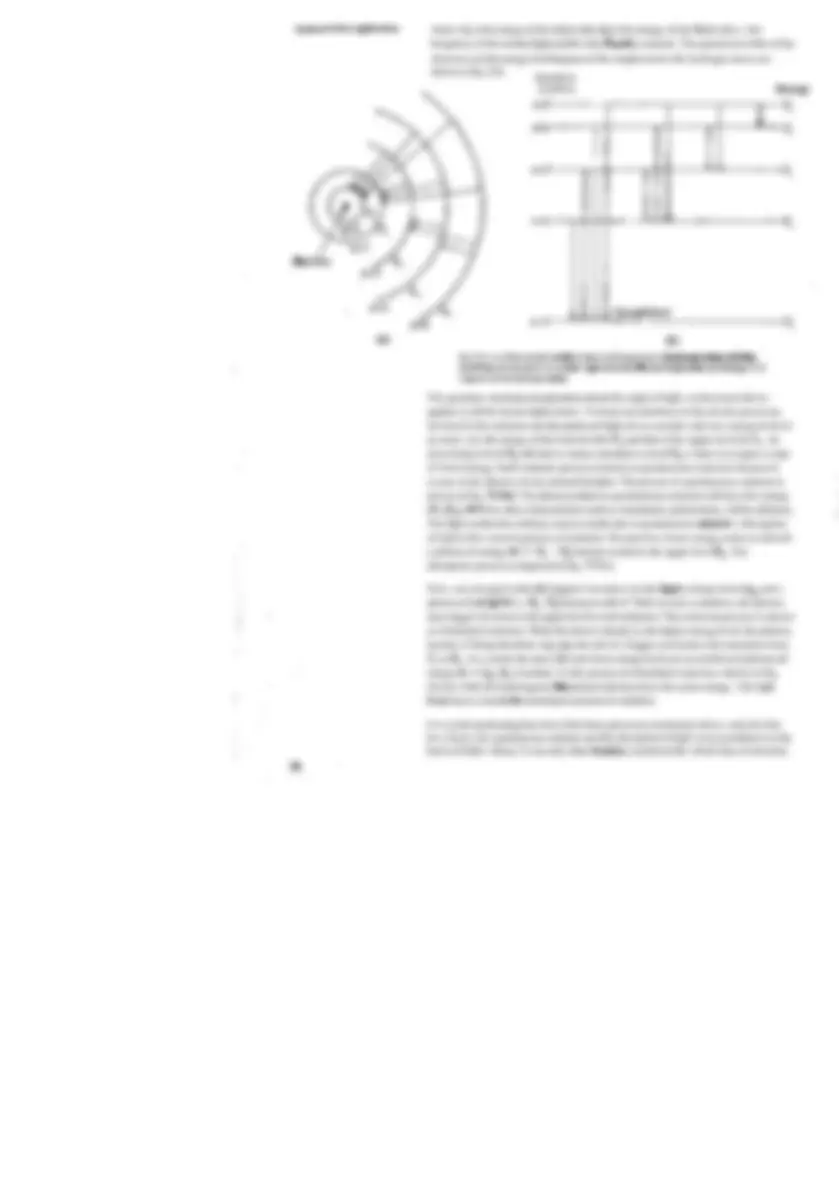
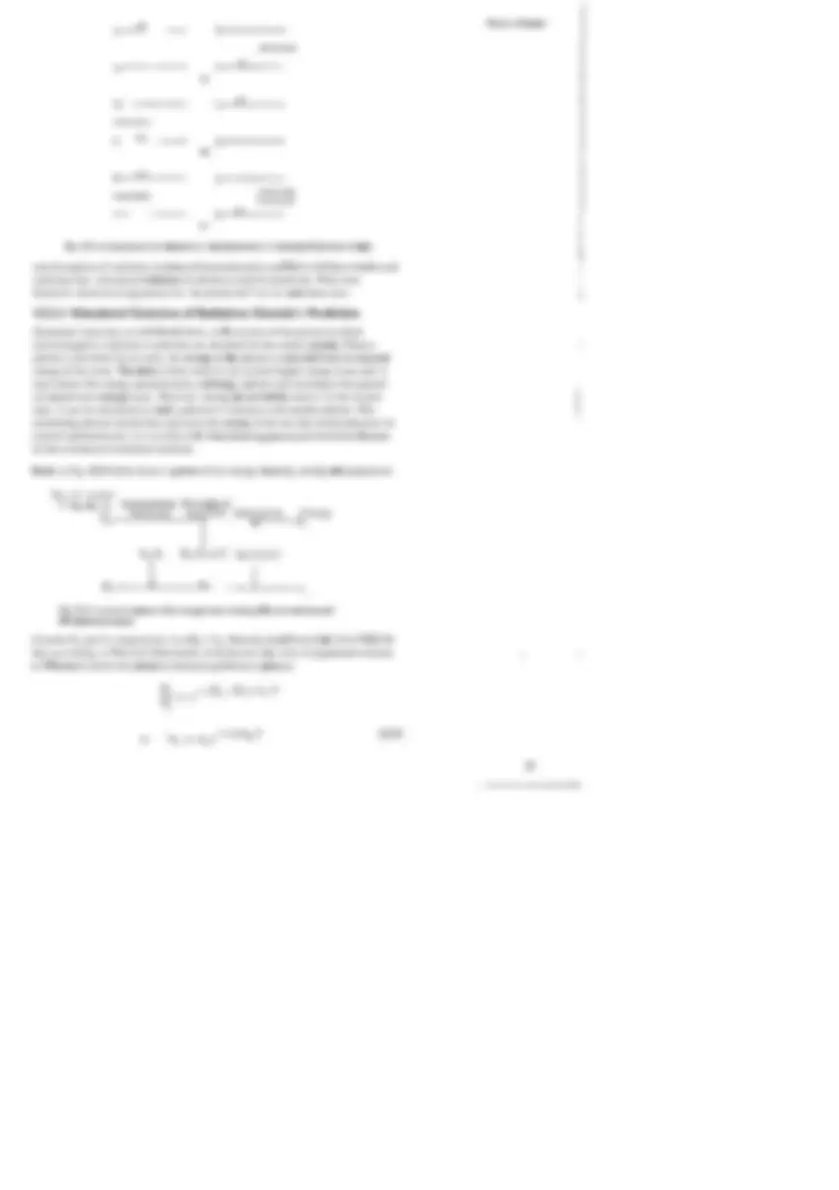
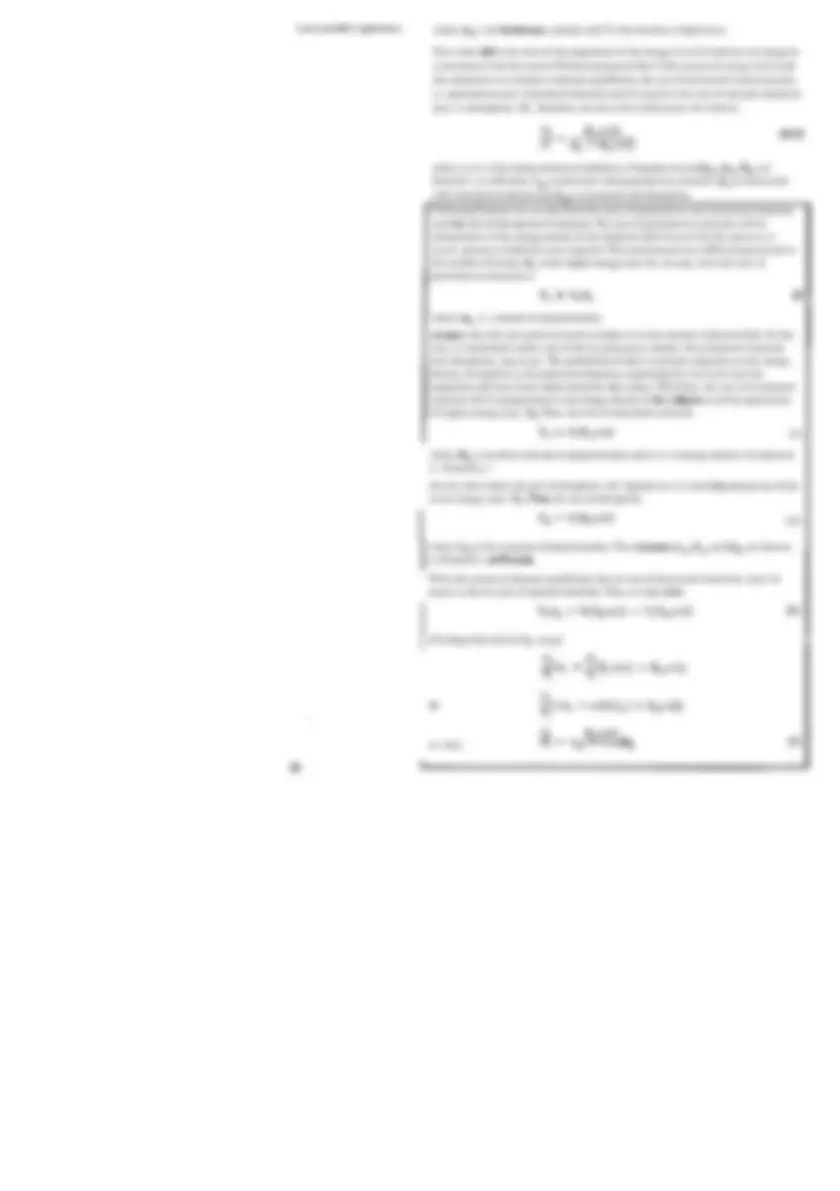
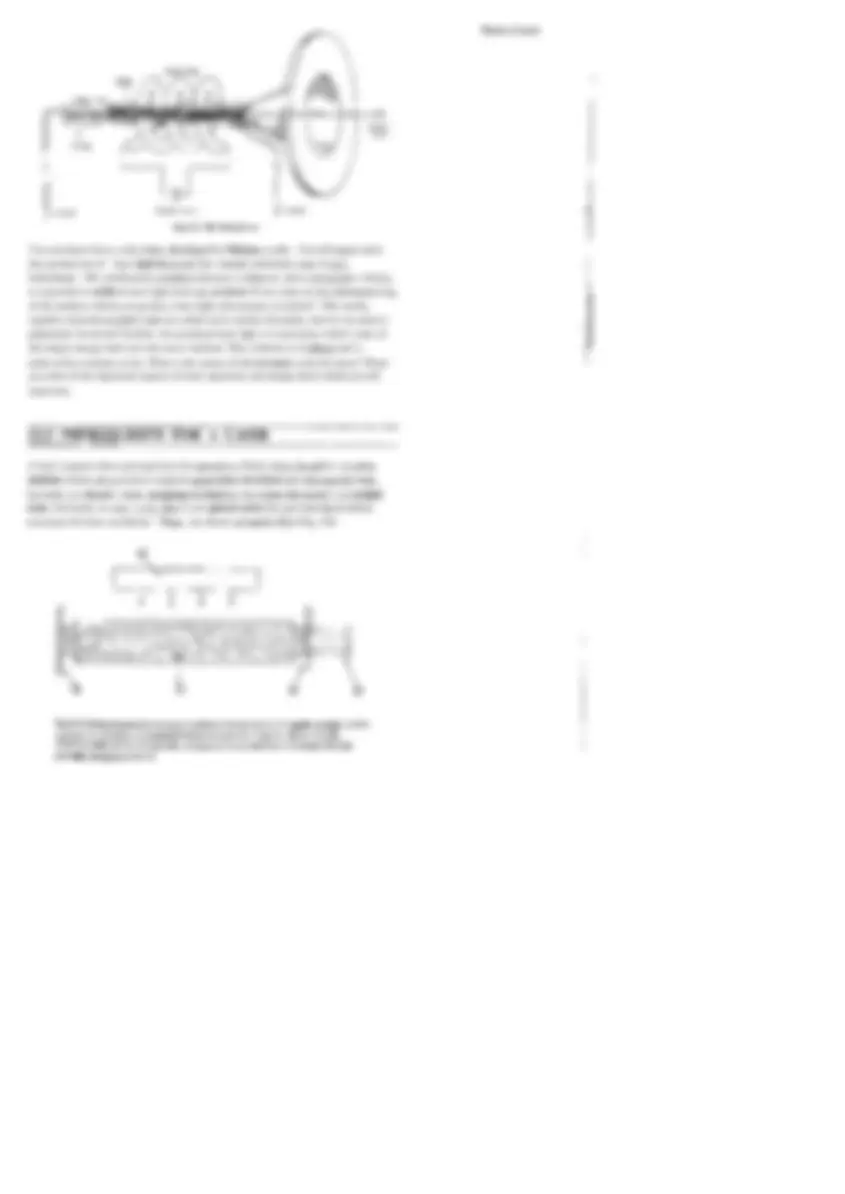
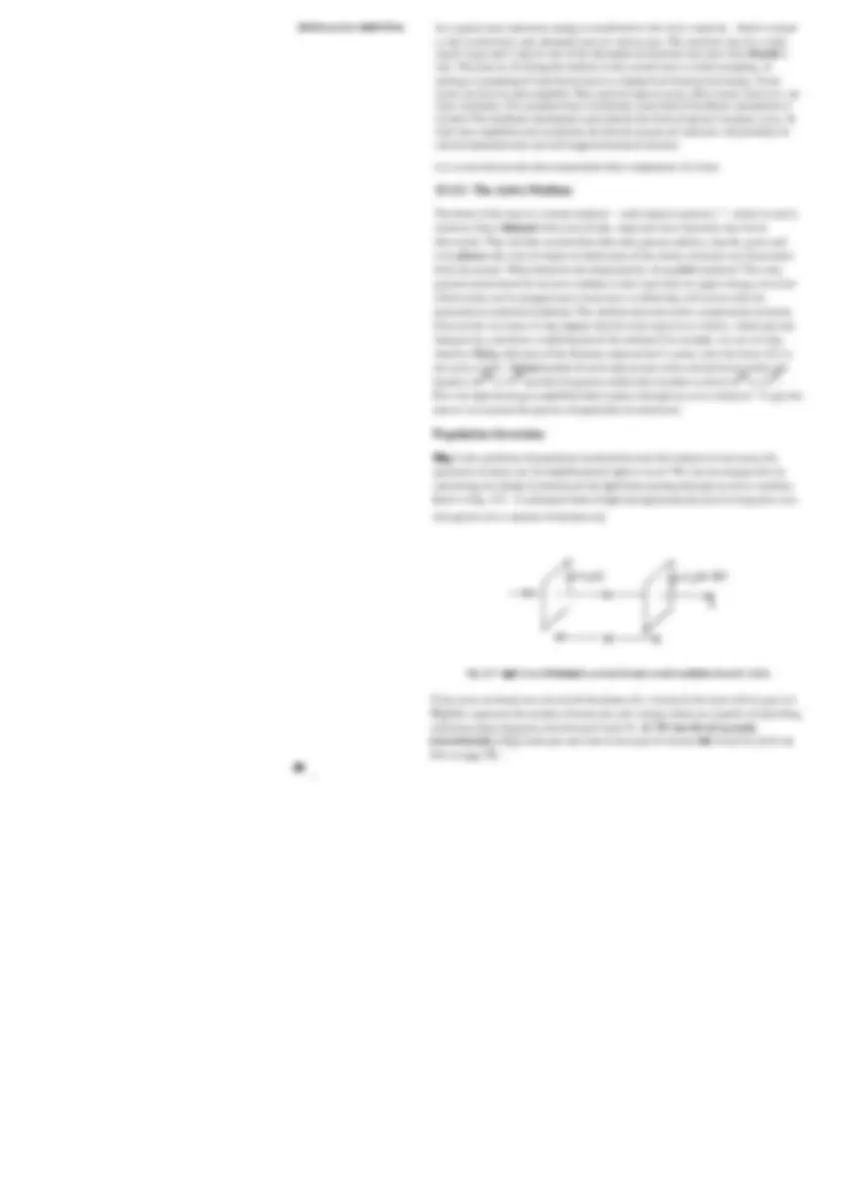
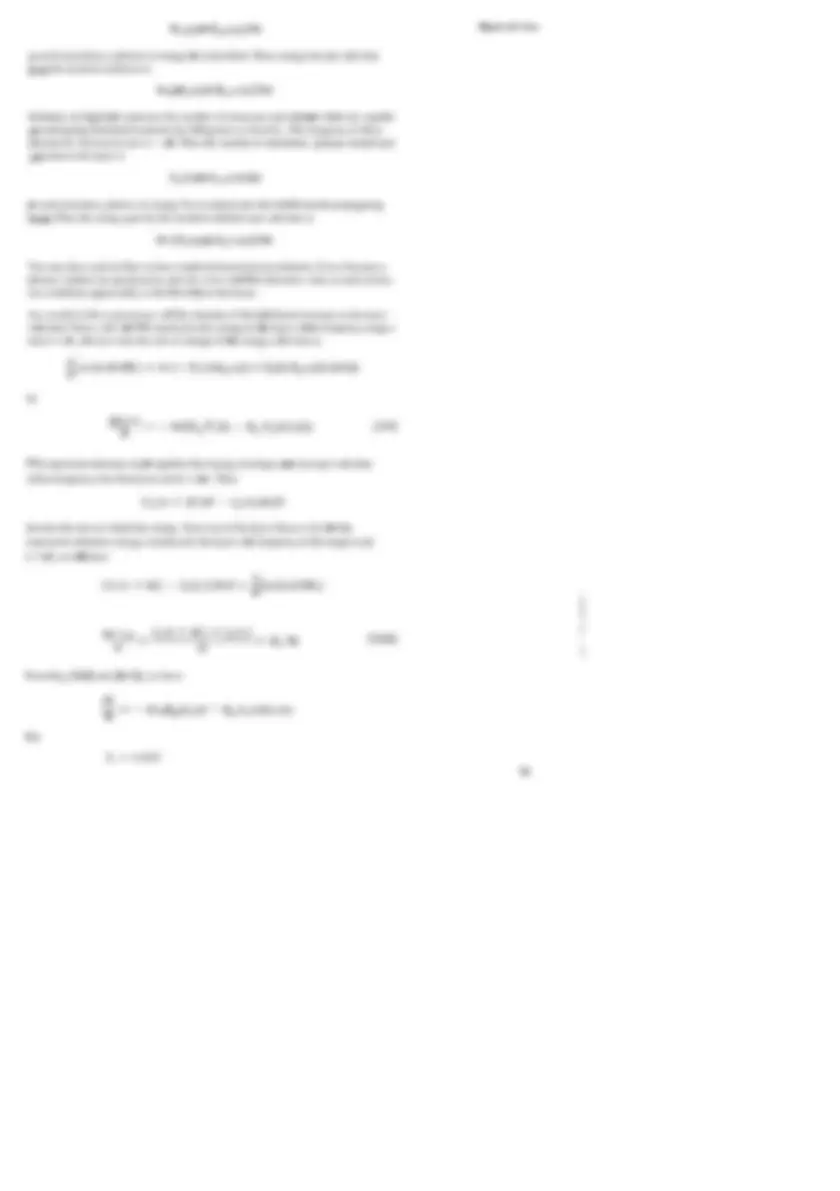

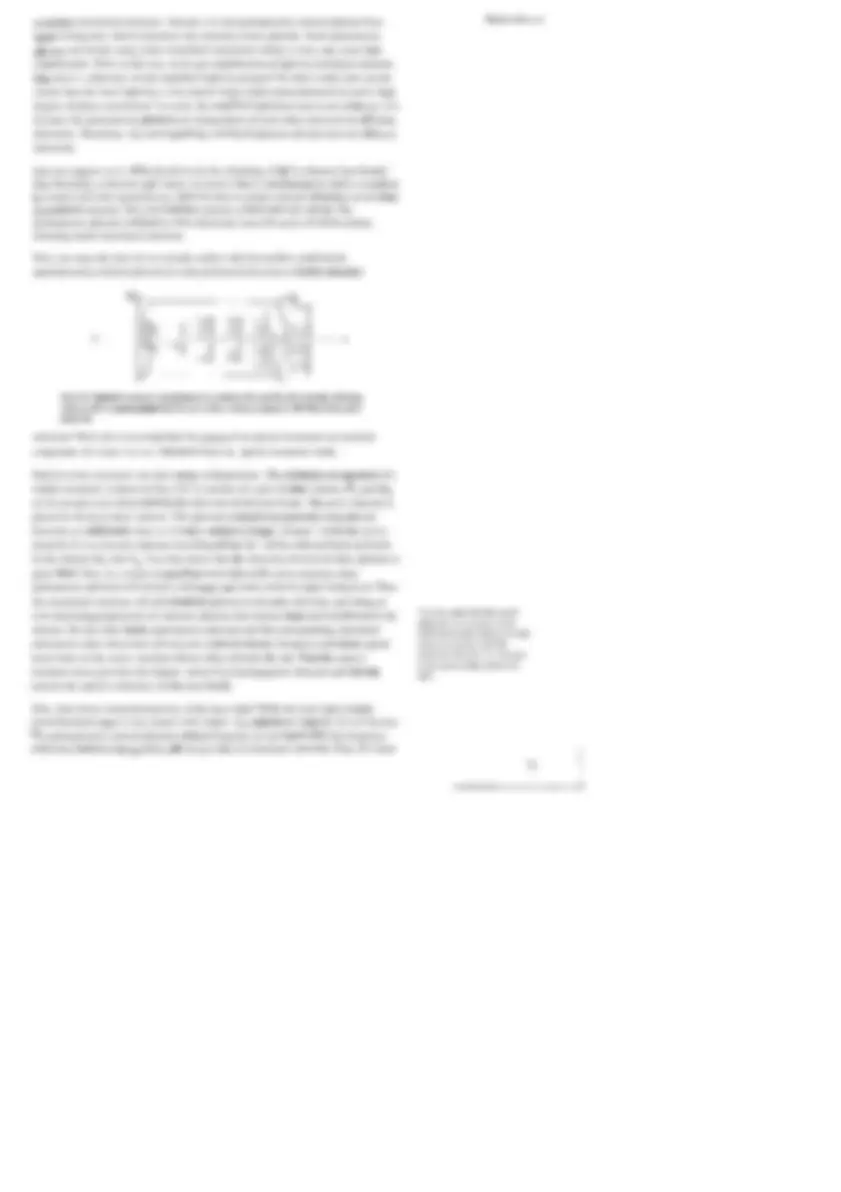
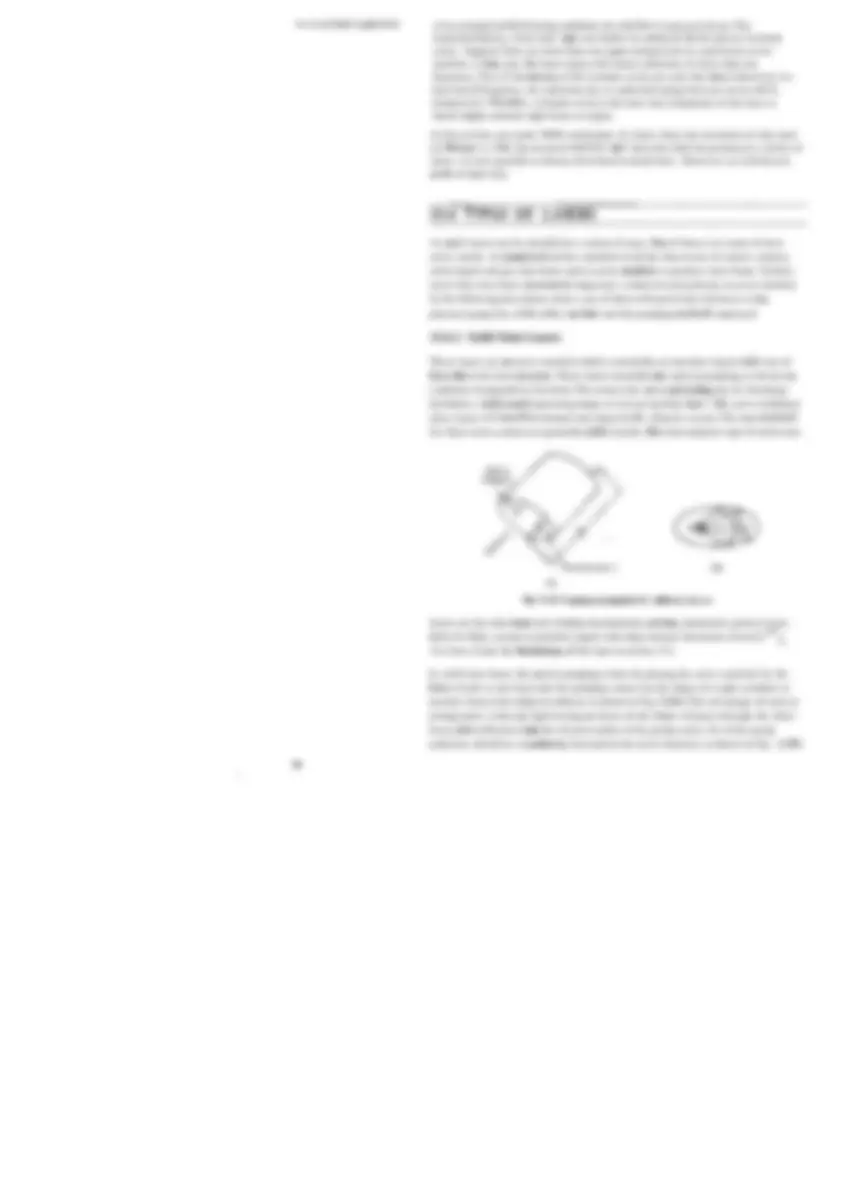




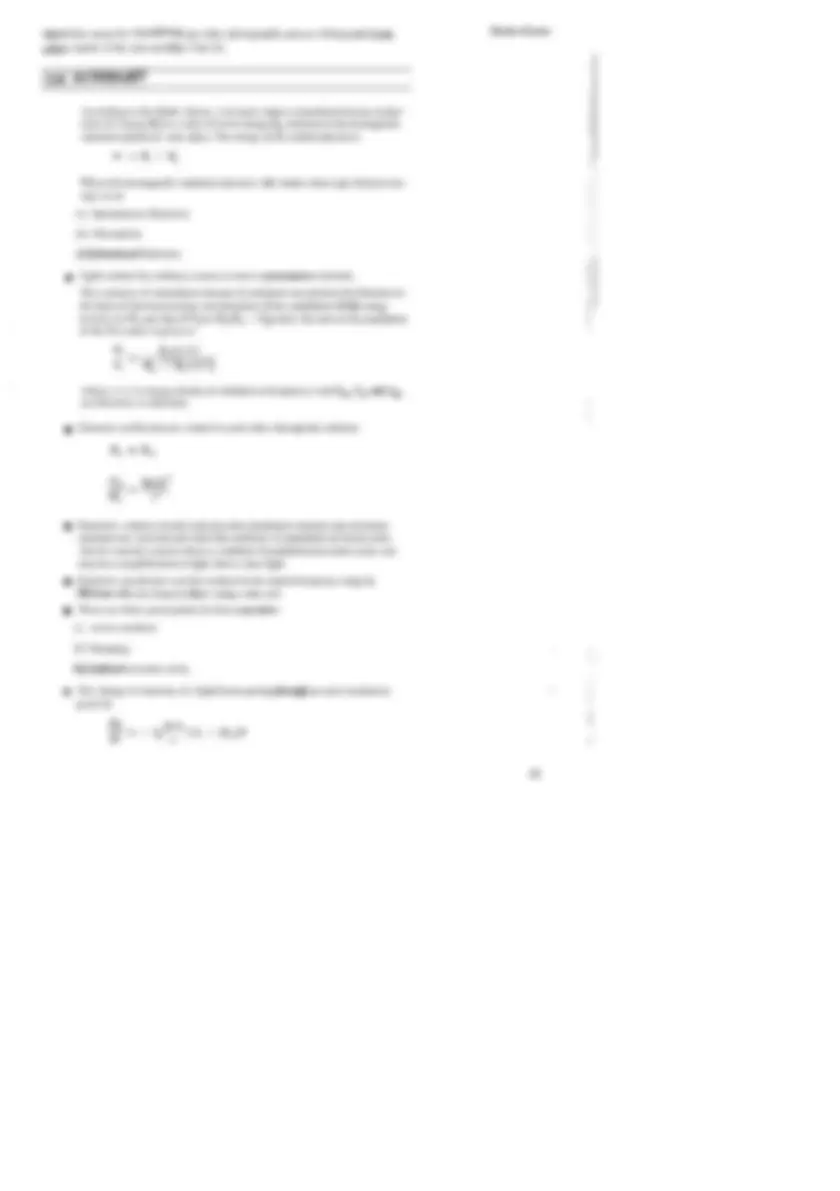
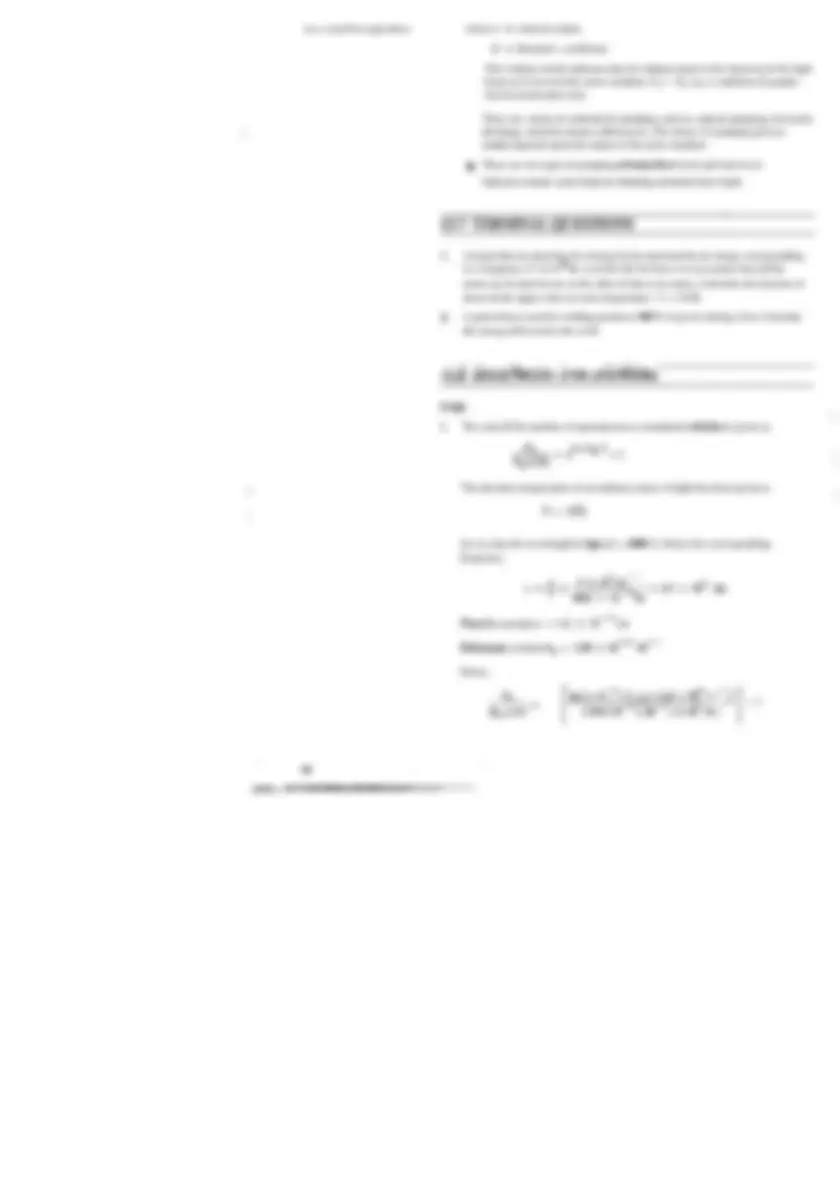
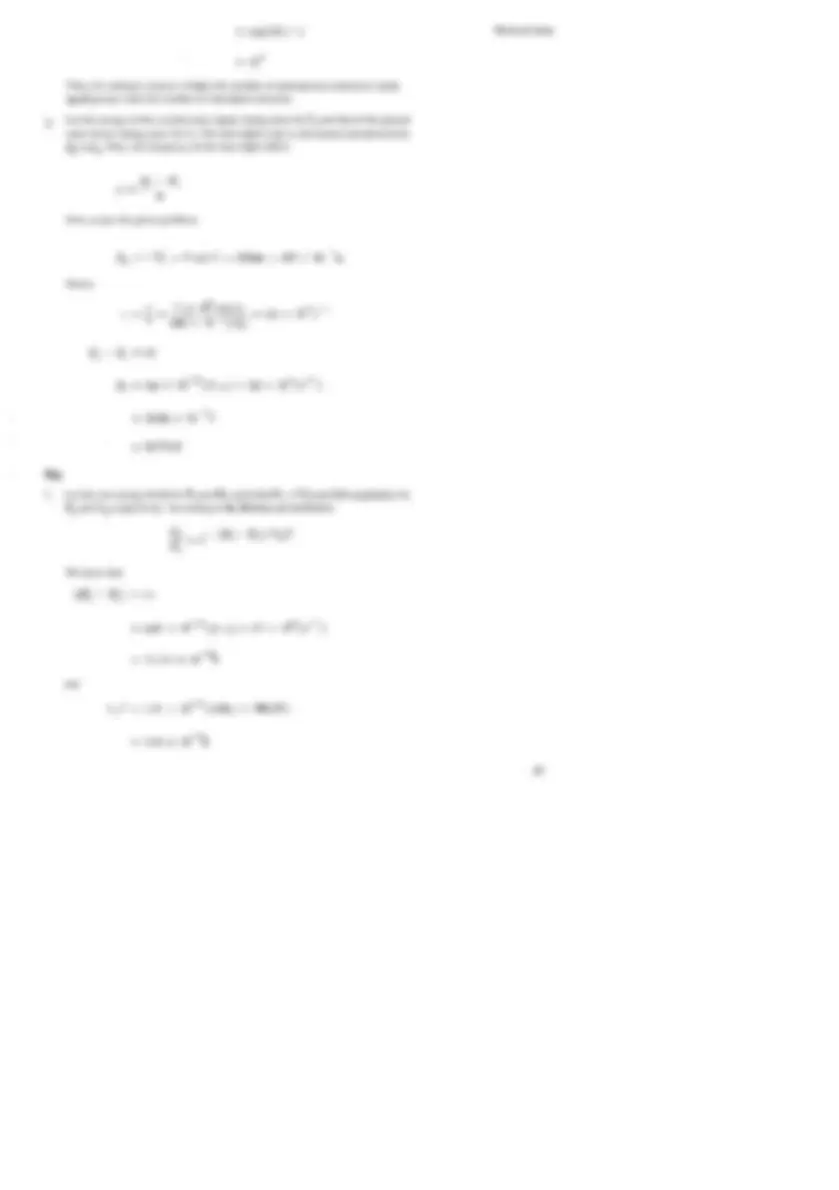



Study with the several resources on Docsity

Earn points by helping other students or get them with a premium plan


Prepare for your exams
Study with the several resources on Docsity

Earn points to download
Earn points by helping other students or get them with a premium plan
Community
Ask the community for help and clear up your study doubts
Discover the best universities in your country according to Docsity users
Free resources
Download our free guides on studying techniques, anxiety management strategies, and thesis advice from Docsity tutors
An introduction to lasers, including their structure, types, and applications. It explains the quantum mechanical description of the emission and absorption of light, the need and methods of pumping, and the characteristics of the active medium for lasers. It also discusses different types of lasers, such as solid-state, liquid, and gas lasers, and their applications in various fields, including industry, medicine, communication, and basic research.
Typology: Study notes
1 / 25

This page cannot be seen from the preview
Don't miss anything!


















13.1 Introduction Objectives 13.2 Light Emission and Absorption Quantum Theory: A Bricf Outline Stimulated Emission: Einstein's Prediction Einstein's Prediction Realised 13.3 Prerequisits for a Laser Active Medium Excitation (or Pumping) Feedback Mechanism 13.4 Types of Lasers Solid State Lasers Liquid Lasers Gas Lasers 13.5 Applications of Lasers Communication Basic Research Medicine Industly Environmental Measurements Photography 13.6 Summary 13.7 Terminal Questions 13.8 Solutions and Answers
13.1 INTRODUCTION
In the previous unit, you learnt about coherence and cohcrent sources of light. It was explained there why conventional thermal sources of light emit radiation which have very low degree of coherence. However, phenomenon like interference which requires coherent light sources, can indeed be observed with conventional light sources. The quest for obtaining a light source with high degree of coherence led to the invention of lasers. As you know, a useful indicator of the degree of coherence is the coherence length. For ordinary light, the coherence length is of the order 1oU2m,whereas the coherence length for a laser light can be as long as 10^5 m! So, you may appreciate the difference in the degree of coherence between an ordinary light and the laser light. In the present unit, we will discuss about this source of highly coherent light beam- the LASER.
The name laser is an acronym for LightAmplification by Stimulated Emission of Radiation. You must realise that the key words here are amplification and stimulated emission. The existence of stimulated emission of radiation, when radiation interacts wilh matter, was predicted by Einstein in 1916. His theoretical prediction was realised
by stimulated emission of radiation (maser). The principle of maser was adapted for
was developed by T.H. Maiman in 1960. Once the laser was invented, it has found applications in such diverse fields as basic research, industry, medicine, space, photography, communication,defence, etc,
In Sec. 13.2, you will learn about the quantum mechanical description of the emission and absorption of light. In particular, you will learn about spontaneous emission and stimulated emission of r,adiation.In Sec. 13.3, the physical principles involved in the operation of lasers viz.excitation (or pumping), the need of an active medium and the feedback mechanism have been explained. Since the invention of laser by Maiman using small ruby rod as active medium, Lasers have come a long way. Presently, lasers are built using solid or liquid or gas as active media. Apart from these, now semi - conductor based lasers are finding wide application:. These different types of lasers have been briefly discussed in Sec. 13.4. The applications of lasers are so many and so varied that thcir detailed account will take us too far. In Sec. 13.5, we have, however, briefly discussed applications of lasers in industry, medicine, communication and basic research. In the next unit, you will study about holography, which would not have been possible without laser light. And in Unit 15, you will study about optical fibres-a medium of transporting light-which is a very active area of research and development for long distance optical communication purposes.
After going through this unit, you should be able to
explain the concept of stimulated emission of radiation and differentiate it from spontaneous emission describe the need and methods of pumping list the characteristics of the active medium for lasers describe different types of lasers, and describe the important applications of lasers.
13.2 LIGHT EMISSION AND ABSOR
As you are aware, most of the man-made sources of light are the solids and gases heated to high temperatures. For example, in case of incandesent bulb, the tungsten fdament is heated, and in case of murcury tube light, the gas is heated. The energy of the heating source is absorbed by the atoms or molecules of the solid or the gas, which, in turn, emit Light. The basic mechanism of the origin of light from within gas molecules, liquids and solids is similar in many respect to that from an individual atom. And the process of emission and absorption of light from atoms can be understood in terms of Bohr's atomic model. Though you might have studied Bohr's model in your school physics course, we briefly discuss it here for the sake ofcompleteness.
You may recall from your school physics course that according to Bohr's theory, the energy of an atom or a molecule can take on only definite (discrete) values. These are known as the energy levels of the atom, The transition of an atom from one energy level to another energy level occurs in quantum jump. This was one of the basic assumptions of Bohr's theory. On the basis of this presumption, Bohr postulated that light is not emitted by an electron when it is revolving in one of its allowed orbits (and hence has a fixed value of energy). Light emission takes place when the atom makes a transition from an excited state (of energyEi) to a state of lower energy Ef.The frequency of the emitted radiation is given by
Physics of h e r s
Physics of Lnsers
Fig. t3.2: (n) Spontnncous Eniisslon (1)) Absorplion and (c) Slimul~lledEmission of light and absorption of radiation in terms of thermodynamic equilibl.iun1between matter and radiation that stimulated e~nissionof radiation could be predicted. What were Einstein's theoretical arguments for the prediction? Let us lcarn these now.
Stimulated emission, as nlenlioncd above, is thc reverse of the process in which electromagnetic radiation or photons are absorbed by the atomic systcms. When a photon is absorbed by an atom, the encrgy of thc photon is converted illto the intcrnal energy of the atom. Thc atom is then raised to an excited (higher energy) state and it may radiate this energy spontaneously, enlitling a photon and reverting to the ground (or some lower e n e r a ) state. However, during thc period thc atom is in the excited state, it can be stimulated to cmit a photon if it interacts with another photon. This stimulating photon should have prcciscly the energy of the one that would otherwise bc emitted spontaneously. Let us look at thc thcorctical arguments put forward by Einstcin for the existence of stimulated emission.
No. of atoms i n the Icvcl S ~ O ~ ~ ~ ~ C O U SSlimulatcd clllission cmission Absorption Energy
N
Fig. 13.3: A n nlonlic s y s l c ~ nof Iwo encrfiy icvcls sllowing dlffcrcnt cnlission nnd ahsorption proccsses.
that according to Maxwell - Boltzmann distribution, thc ratio of population of atoms in diiferent levels for the systcm in thermal equilibrium is givcn as
Lasers and thcir Applications (^) where, kg is the Boltzmann constant and T is the absolute temperature.
Now what will be the ratio of the population of the energy levels if radiation of energy hv is introduced into the system? Einstein proposed that if this system of energy levels and the radiations is to remain in thermal equilibrium, the rate of downward transition (due to spontaneous and stimulated emission) must be equal to the rate of upward transition (due to absorption). He, therefore, arrived at the relation (see box below),
where, u (v) is the energy density of radiation at frequency v and B12,A21,B21 are Einstein's co- efficients.A2, is associated with spontaneous emission, Bzl is associated with stimulated emission and B12 is associated with absorption. Following Einstein, let us write down the rates of spontaneous and stimulated emission and the rate of absorption of radiation. The rate of spontaneous emission will be independent of the energy density of the radiation field because for this process t o occur, presence of photon is not required. This emission process will be proportional to the number of atoms, N2, in the higher energy state, So, we may write the rate of spontaneous emission as
where AZl is constant of proportionality. Assume next that the system of atoms is subject to some external radiation field. In that case, as mentioned earlier, one of the two processes, namely, the stimulated emission and absorption, may occur. The probability of their occurrence depends on the energy density of radiation at the particular frequency separating the two levels and the population of states from which transition takes place. Therefore, the rate of stimulated emission wiH be proportional to the energy density of the radiation and the population of higher energy state, N2. Thus, the rate of stimulated emission
I P^21 =^ N2^4 1 U^ ( 4^ (ii)
at frequency v.
lower energy state, Nl. Thus, the rate of absorption
I
where B12is the constant of proportionality. The constantsAzl, B12 and Bzl are known as Einstein's coefticients. With the system in thermal equilibrium, the net rate of downward transition must be equal to the net rate of upward transition. Thus, we may write
I Dividing both side by N1, we get
h e r s and their Appllcatfons 1954, when Townes and coworkers developed a microwave amplifier (MASER) using NH3. In 1958, Shawlow and Townes showed that the maser principle could be extended into visible region. In 1960, the prediction was realised by Maiman who built the first laser using Ruby as an active medium. Maiman found that a suitable active component for a laser could be made from a single crystal of pink ruby: aluminium oxide (AI,O,), coloured pink by addition of about 0.5 percent chromium. For any laser action to take place, a condition of population inversion must be met. By population inversion we mean that the number of atoms in higher energy state is larger than the ground (or some lower energy) state. The energy states of the chromium atom, as shown in Fig. 13.4, are ideal for obtaining population inversion. The chief characteristics of ener levels of a Chromium atom is that the levels labelled as El and E2 have a life time 10^ 5! s. whereas the state marked M has a life time 3 x 10-~s.The energy state M with such a long life time (as compared to other excited states) is called a metastable state.
Ground L
Fig.13.4: Energy levels of chromium atom: (a) atoms in the ground state @) on absorbing pholons, atoms are exclted to one of the two energy levels El and Et (c) atoms glve up some ot I t s energy to the cryslal lattice and fall to a me(nsbble level, M, (d) When stimulated by photons, the atoms in melasiable level emit photon and fall to ground state.
transition to the level El; it could also absorb a photon of lZ - 4000 A and make a
When an atom undergoes a (^) transition to the level E2. In either case, it subsequently makes a non - radiative transition, lion- radiativetransition the energy is not released in the form OF in time^^10 "s,^ to the metastabe state^ M.^ Since the state^ M^ has a very long life, the number photons; rather, the energy is (^) of atoms in this state keeps on increasing and we may achieve a population inversion via atomic collisions, (^) between the state M and G (the ground state). Thus, we may have larger number of collision with the crystal lattice etc. atoms in the level M compared to those in the state G. Once population inversion is achieved, light amplification can take place.
In the original set up of Maiman, the pink ruby was machined into a rod of length nearly four centimeter and diameter half a centimeter. Its ends were polished optically flat and parallel and were partially silvered. The rod was placed near an electronic flash tube (filled with xenon gas) that provided intense light for pumping chromium atoms to (^1) higher energy states. The set up of rltby laser is shown in Fig. 13.5. When the required population inversion was achieved with the help of electronic flash tube, the first few photons released (at random) by atoms dropping to the ground state stimulated a I cascade of photons, all having the same frequency. i
I
I1hysicsof Lnsers
Flg.13.5: The Ruby Laser
You now know how a ruby lascr, developed by Maiman, works. You will appreciated that production of laser light demands that certain conclitions must be met beforehand. (We deliberately avoitled reference to tlrcse in above paragraphs.) Firstly, is it possible to achieve laser light from any medium? If not, what are the chahracteristics of the medium which can produce laser light after proper excitation? (The media capable of producing lascr light are called active media.) Secondly, how do we achieve population inversion? Further, for sustained laser light, it is necessary to feed some of the output energy back into the active medium. This is known as fcedback and is achieved by resonant cavity. What is the nature of this rcsonant cavity for lasers? These are some of the important aspects of laser operation and design about which you will learn now.
13.3 PREREOUISITS FOR A LASER
A laser requires three prerequisites for operation. Firstly, thcrc slloulcl be an ~ctive medium which, when excitccl, supports populi~tioninversion ancl subscqucatly lascs. Secondly, we shodd ensure pumping mechanism, that raises the system to an excited state. And lastly, in most cases, therc is an optical cavity that provides the feedback necessary for laser oscillation. Thesc are shown schematically in Fig. 13.6.
Fig.13.6: Rwic c o ~ ~ ~ p o n e n t sof H lnser osclilnlor: Energy source (I) si~pplicst n e r g to riclive medium (2). Medium is conlninetl between two mirrors (3 nnd 4). Mirror 3 Lv hilly reflecllve wl~ilemirror 4 Is pnrtltiily trnnsprrent. Lnser rntlintion (5) emerges t h r o ~ ~ g h Partinlly trnnspnrenl mirror.
In each transition, a photon of energy hv is absorbed. Thus, energy lost per unit time from the incident radiation is
Itv [ N, (v) dv B12re (v) ] Sdu
Similarly, let N2(v) dv represent the number of atoms per unit voli~mewhich are capable of undergoing stimulated emission by falling down to level E l. The frequency of these photons lie between v and v + dv. Then the number of stimulated pho~onsemitted per unit time in the layer is
N2(v) dv B2, 14 (v) Sdw
In each transition, photon of energy h v is emitted and this reinrorces the propagating beam. Thus the energy gain by the incident radiation per unit time is
hv [ N , (v) dv BZLic (v) ] Sdw
You may have noticed that we have neglected spontaneous emission. It is so because a photon, emitted via spontaneous process, is in a random direction. And, as such, it does not contribute appreciably to the intensily of the beam.
As a result of above processes, will the intensity of the light beam increase or decrease with time? Since u (v ) dv Sdw represents the energy in the layer within frequency range v and v -f- dv , we can write the rate of change of [lie energy with time as
IEI, represents intensity, I,, dv signifies the energy crossing a unit area per unit time whose frequency lies between v and v + dv. Then
represents radiation energy contained in the layer with frequency in the range v and v f dv, we will have
From Eq. (13.9) and (13.10), we have
-^ arv = - Itv [ B,, N, (v) - B,, N2 ( v ) ] 11 (v) ax
But
I,, = u (v) V
Lasers and their Applicntioms
where v = velocity of light in the active medium ( = C/IZ;IZ = refraction index of the medium). Thus, we get
where B ( = B12 = Bzl ) denotes either Einstein's coefficient. Hence
where a,, is absorption coefficient. We can rewrite it as
O n integration we find that
If we compare Eqs. (13.12) and (13.13), we get the expression for absorption co - efficient:
At thermal equilibrium, N1 > N2, that is, the population of ground state is greater than the population of the excited state and as can be seen from Eq. (13.15), a, is positive. Positive a, implies, (from equation 13.14) that the intensity of the beam decreases as it propagates through the material. The lost energy is used up in the excitation of atolils to higher energy states.
O n the other hand, if we have a situation in which N2> Nl, a, will be ncgative and intensity of the light beam would increase, that is, get amplified as it propagates through (^) I the material. This process is light amplification. Since this occurs when there is a higher population in excited state than in the ground (or lower energy) state, the material is said to be in the state of population inversion. Thus, the condition of population inversion is necessary for amplification of intensity of lig'ht beam. (^) I
In the previous sub - section, you have learnt about the necessity of population inversion in the active medium for obtaining laser light. The process of obtaining population inversion is known as pumping or excitation. The aim of the pumping is to see that upper energy level is more intensely populated than the lower energy level. Alternatively, we can obtain the population inversion by depopulating lower energy level (other than ground state) faster than the upper energy level. There are several ways of pumping a laser and achieving the population inversion necessary for stimulated emission to occur.
Lasen P, thew Applications
l r
Fig.13.8: Three level pumping schemes, (a) the ground slnte (0) nnd lower lasing stale (1) are the snme, (h) pumping sfnte (3) nnd upper lnsing sitate (2) are the same. (c) Four level pumping scheme; is highly populated. And, as you can appreciate, an ideal lower lasing state (1) should be empty or very thinly populated. How to get rid of this problem? According to the uncertainty arinciule,- - about which YOU will This problem can be taken care of if the pumping^ scheme is as shown in Fig. 13.8 b. As stud3 in the PHE-11 course on (^) you can sec, the atoms in the lower lasing state undergo non - radiative transition to the
with longer life time will have narrow frequency band. for all practical purposes. You may, however, note that the same energy stale acts as pumping state (3) and the upper lasing state (2). This stale or affairs has its own shortcoming. If the pumping state has to act as upper lasing state, it must have a longer lifc time (metastable state) which implies that it must have very narrow frequency width. On the other hand, for proper ulilisation of pumping energy, this state must have a wide frequency width so that more and more atoms get accomodated there. So, you see, il is a kind of conflicting requirements put on a single energy slates.
The pumping scheme free from the shortcomings mentioned above with reference to three-level pumping scheme is what we call four-level pumping scheme shown in Fig. 13.8~.In this case, the pumping stale (3) and the upper state (2) are seperate; atoms in the pumping state undergo non-radiative transition to the upper lasing state. The four level pumping scheme, however, has some limitations. Substantial energy is lost during non-radiative transitions between pumping state (3) and the upper lasing state (2) and
You may now ask: Which pumping scheme is better and preferred? Each pumping
. (^) scheme has its own advantages and disadvantages. The choice of the pumping schemc in designing a laser depends upon the active media, the kind of use we want to put the laser light to, elc. We will discuss these aspects in the following sections. You may now like to answer an SAQ
SAQ 2 Spertd 2 ntirt If laser action occurs by the transition from an excited state to the ground state and it produces light of 693nm wavelength, what is the energy of the excited state. Take the I energy of the ground state to be zero. 1 I
I i On the basis of the discussion in the previous sections, you now know that when a state 1 of population inversion exists in an active medium, a light beam of particular frequency fI
stimulated emission dominates spontaneous emission. This is the basic principle of optical amplifier. But a laser is much more than a simple optical amplifier. The laser,
i
which produces a highly coherent beam of light, docs not include a coherent light beam
to initiate stimulated emission. Instead, it is the spontaneously emitted photon from upper lasing state which stimulates the emission of new photons. Each spontaneous photon can initiate many other stimulated transitions which, i n turn, may cause light amplification. Well, in this way, we do get atnplification of light by stimulated emission. ~ u t ,how is coherence of this amplified light ascertained'? In other words, how can wc ensure that the laser light has a very narrow band width (monochromaticity) and a high degree of phase correlation? As such, the amplified light from laser is not cohcrent. It is because the spontaneous photolls are indcpcndcnt of each other and travel in different directions. Therefore, the correspondillg stinlulated photons will also travcl in diffcrcnt directions.
Can you suggest as to what should we do for obtaining a highly coherent laser beam'? For obtaining a coherent light beam, we need to havc a lncchanism by which a colldition is created such that sponlancous emission only in certain selected dircction can dcvelop stumulated emission. This tnechanism is known as fccdback ~ncchanism.The spontaneous photons emitted in othcr directions leave thc activc medium without initiating much stimulated emission.
Now, you may ask; how do we actually achieve this favourable condition for spontaneously emitted photons in some preferred direction to furthcr sti~nulate
Fig.13.9: Optlcnl resonntor consisting of two nilrrors M I and M2; M I is totnlly reflecting whereas M2 is semltronspnrent; tile nxis of the nlirrors is ~ l i g n e dwit11 tl~ntof the active mrrterlal. emission? Well, this is accomplished by means of an optical resonator - an essential component of a laser. Let us understand how an optical resonator works.
Optical cavity resonator can have nlally conligurations. Thc schcmalic arrangcmcnl of a simple resonator is shown in Fig. 13.9. It consists of a pair of planc mirrors, M I and M2, set on an optic axis which defincs the dircction of the lascr bcarn. The activc material is placed in betwccn these mirrors. The photons enlittcd spo1lta11col1slyalong theAA
material, It is so because photons travelling al&g AA will be reflected back and forth by the mirrors MI and Mz, You tnay notice that the direction of travel of these photons is quite fixcd. Now, as a result of spcnding morc timc in the activc material, these spontaneous photons will interact with more ancl more atoms in upper lasing level. Thus, the stimulated emission will add iclentical photons in the samc direction, providing an ever-increasing population of coherent photons that bounce back and forth betwccn the mirrors. On the other hand, spontaneous photons and thc corresponding stimulated emission in other directions will traverse rclatively shorter distances (and hence spend lesser time) in the activc meclium. Hence thcy will sooll dic out. Thus the optical resonant cavity provides the desirecl selectivity of propagation clirection and tllcreby ensures the spatial coherence of the lascr bcarn.
Now, what about monochromaticity of the lascr light? Well, the laser light is highly monochromatic due to very nature of its origin - thc stimulatccl crnission. It is so bccausc the spontaneously emitted photons whosc frcquency do not match with the frcquency difference betwcen lasing Icvels will not give rise to stimulated cmission. Thus, the band
Physics of Lasers
You may rccall tliat thc spatial col~e~~cnccis a measure of the uniformity oithe phasc across the optical wavefront. And Lhc temporal coherence is a measure of the nionochromaticity of thc light.
This laser, unlike ruby laser, employs foul-level pumping scheme. The energy levels of the neodymium (the active material) is shown in Fig. 13.11. In order to keep the discussion simple, we have not used the spectroscopic notations for different energy levels in Fig. 13.11. Rather, energy lcvels have been marked E,, El, and so on. The optical p m p i n g raises the Nd atoms in the ground state (E,) to a few excited states (E,, E,). The energy levels marked E4 and El are the lasing levels. The pumped atoms in the excited states undergo non-radiative transition to the upper lasing level, E4. Out of the group of lower lasing levels, the major portion of energy is emitted in the transition
Fig. 13.11: Enerpy level diugrnm of Nd (neodymium) ion in Nd: YAC.
E4 + El. The Nd: YAG laser is an example of four-level laser.
This solid - state laser has two advantages: (a) it has a low excitation thresl~oldand (b) has a high thermal conductivity. Due to high thermal conductivity, it can be used for generating lighl pulses at a high repetition rate or for conti~~uousoperation.
In this class of lasers, as the name indicates, the active media are either the liquid solutions of organic dyes or specially prepared liquids doped with rare - earth ions viz ~ d ". However, majority of liquid lasers use a solution of au organic dye as active medium and hence are also called organic dye lasers. Solvents used for the purpose are water, methanol, benzen, aceton etc. The liquid lasers are optically pumped. The energy states taking part in thc lasing transition are the different vibrational energy states of different electronic energy states of the dye molecule. Since you may not be familiar with the vibrational energy states of molecules, wc do not discuss the pumping scheme of this class of lasers.
In contrast to solids, liquid clo not crack or shatter and can be made in sizes almost unlimited. Another advantage of liquid lasers is due to [heir (that of organic dyes) wide obsorption bands in the visible and near ullravoilet portion of the electromagnctic spectrum. Therefore, liquid lasers are an ideal candidate for tunable laser i.e. the frequency and hencc energy of [he outpul Iascr beam can be sclected with ease.
The attractive feature of gas lasers in which rarified gases are the active media, is that
for the cesium - vapour laser, gas lasers are pumped electrically rather than optically. + Can you say why? It is because the condition for amplification by stimulated emission, at one wavelength or another, are satisfied by an electrical discharge through almost any gas. Another reason for employing electrical pumping for gas lasers is that, unlike solids and liquids, the absorption lines of active centres in gaseous media exhibit substantially narrow widths. Therefore, optical pumpipg would prove very inefficient for gas lasers because the pump radiation obtained from optical sources d o not have line spectrum of very narrow lines. In other words, the energy of optical pump radiation has a considerable spread in its value and since the gaseous active media will absorb radiation ' of almost single energy, most of the pump energy will go waste. Hence, opticaI pumping is not used for gas lasers. Further, gas tasers have advantage over solid state and liquid lasers in that they are free from local irregularities. Most gaseous systems have a high degree of optical perfection simply because the density of the gas is uniform.
We will now briefly describe a typical gas laser - the Helium - Neon gas laser. This was the first gas laser operated successfully.
In the helium - neon laser, a mixture of helium (He) and neon (Ne) gases is used as active medium. Lasing levels are provided by the exited states of t h e N e atoms, whereas the H e atoms play an i~nporlantrole in pumping Ne atoms to the excited states. The He-Nc Totally Partially reflecting transparent mirror mirror
Non-radiative transition
I (^) - Laser beam
Flg.13.13: Energy level diagram or helium- neon laser. Arrnws (a)indicate thc lasing transition
He - Ne mixture
AnA2+ AAAl+
-\Electrodes /" Flg.13.12: The IIe-Ne h s e r
Lasers and their Applications (^) In a typical laser, this directionality is limited only by the diffraction of the emerging
beam by the laser aperture ilsclf. The brightness and directionality of laser beam are exploited to produce targetted effects in materials. These applications include material working (such as heat treatment, welding, cutting, hole burning etc.), isotope seperation, medical diagnostics, etc. In the following, you will learn some of these applications of lasers.
You may be aware that in a typical c:ommunication system, information is communicated (between the transmitter and the receiver) through electromagnetic waves, which are known as carrier wave. These are rnodulated by the desired signal (the oscillations of the information proper). Normally the signal frequency is appreciably lowcr than the frcquency of the carrier wave. Moreover, higher tlie carrier frequency, wider frequency range it can modulate. In other words, the capacity of a communication channel is proportional to the frequency of the carrier wave. The frequency in the centre of the visible spectrum is about 100,000 times greater than the frequency of 6 cm waves used in microwave-radio relay systems. Consequently, the theoretical information capacity of a typical light wave is about 100,000 times greater than that of a typical microwave.
Long distance communication syste~lisrely on the principle of multiplexing- the simultaneous transmission of many different messages (information) over the same pathway. The ordinary human voice (conversation) requires a frequency band from 200 to 4000 Hz, a band 3800 Hz wide. A telephone call, therefore, can be transmitted on any band that is 3800 Hz wide. It call be carried by a coaxial cable in the frcquency band between 1,000,200 and 1,004,000 Hz, in the MHz range, or a He - Ne laser beam (638. nm, 4.738 x 1 0 " ~ ~ )in the frequency range bctwecn 473,800,000,000,200 and 473,800,000,004,000 Hz. You may note here that the telephone message requires about 0.4 percent of the available co-axial carrier frequency. And, rhc same telephone message requires less than one-billiontli of 1 percent of the available laser - beam frequency. Thus, the information carrying capacity could be enhanced tremendously if laser beams are employed as carriers. So, wait for sotne more time till laser trunk lines come into use in a big way and you may be saved from listening "11 lhc lbies itt this rorlle are busy. Please dial ajkrsotne time"!!
Now you may ask: Light, as such, was available to us from time immemorial, then why is it that we are using (or planning to usc!) it for communication purposes now? Is it related to the discovery of a laser in any way? Yes, it is. As we mcntioned earlier, light from conventional sources may not be pure (that is, it may be non - monochromatic) and hence cannot be used for transmitting signals. Radio wavcs from an electromagnetic oscillator are confined to fairly narrow region of electromaglletic spectrum (i.e. it has a well defined frequency). These radio waves are, therefore, free from "noise" (considerabte spread in frequcncy values) and hence can be used for carrying a signal. In contrast, all conventional light sources are esscntially'noise' generators i.e. they simultaneously emit electromagnetic radiations of different frequencies and hence are not suitable as carrier waves. With the invention of lasers, however, the situation changed. As you know, the light produced by lasers is highly monochromatic and coherent which enable them to act as carrier waves in the communication systems.
Now, what is the medium through which laser beam travels while it carries information'? The signal carrying laser beams can be transmitted througll free (unguided) space, and by light guides. Light guides in tlie form optical fibres have found wide use in optical communication. You will learn about the details of fibre optics in Unit 15 of this course.
Physics of Lmsem
The discovery of a laser gave birth L O an entircly new branch of optics known as nonlinear optics. Even at ordinary laser intensities, transparent materials (which are nonconductors), respond in an unusual manner. You niay recall, for example, that the dielectric constant of malerial dcpends on its nature as well as on the frequency of thc light through^ it.^ But,^ i t^ has^ bcen^ observed that when the^ ordinary^ light beam is replaced by a lascr beam, the clielectric constant also dcpends on the instantaneous magnitude of the electric ficlti component of the laser bcam. In other words, the response of a ~~iatcrialto high clcctric fields is non - linear. It is just one of the several non linear cffccts that a laser beam produccs whcn it interacts with matter. In fact, almost all tlie laws of optics are modifiecl to sornc cxtent at high intensities produced by pulscd lascrs.
Another important applicalion of lasers in basic rcscarcli and dcvclopment ii in the field of thermonuclear fusion. As you know, for cffectivc fusion to take placc, extreniely high temperature ( - 10^8 K) must be niaintaincd. In principlc, such high Lcniperatures can be achieved by powerful laser bcams.
Yet another remarkable application of lascrs is in isotope separation. You may recall
2 - 3% of uraniuni isotopc ( 2 3 5 ~ )in the fucl. 111 nalural arimium, however, the percentage of 3 3 5 ~is only 0.7. ( ~ h cmajor conrtitucnt of natural uranium is 238 235 u.) Therefore, to have fucl clirichetl in U, we call usc laser bcams. Each of these isotopes absorbs radiation oT different Srcqucncy. So when a lascr beam of parlicular frequency is passcd through tlic mixtare of "U and 'u , tlic atoms of2"u absorb the radiation and get excited. The cxcitcd atoms of thc desircd isotope arc further excited so that they get ionized. Once ioniscd, il can easily bc separated by applying a dc electric field. This is one of the several mcthocls of using laser beam for isotope scperation.
A properly focussed laser beam, is an excellent tool for surgcry. Thc advantage of lascr surgery is that it is bloodless sincc the bcam not only cuts, il also "welds" blood vcssels. It has a high sterility as no contact oC tissucs with surgical tools takes place. Also, the laser surgery is painless and operations arc very fast. In fact there is not enough time for the patient to respond to thc incision and sensc pain. Laser beams are being widely used lor performing eye and stone surgcry.
A word of caution. As such, any light can causc damage. Laser, in parlicular, can be highly damaging because it has spatial coherence, i.e., it can be focussed down to a high power densities. The ~nnxirnurnperrnissilrle exposure (MPE) is 0.0005 mJ cm".
Invenlion of lasers has made it possible to develop sophisticatcd 1001s of malcrial working (such as drilling, welding, etc) processes used in industry. With appropriate choice of lasers, a laser beam can be focusscd inlo a light spot of diameter 10-100pm!
i I Can^ you imagine this dimension^ -^ it will be^ slnaller^ than^ thc^ dot you mark^ will1^ your pen on a piece of paper! Due lo this sharp focussing, a very high concentration of energy is j (^) available within a small spot on 111e surface of thc material. For example, when a 1kW I I^ output^ of a continuous wave (cw)^ lascr^ is focusscd a spot of^ 100,~ m^ diameter,^ tlie